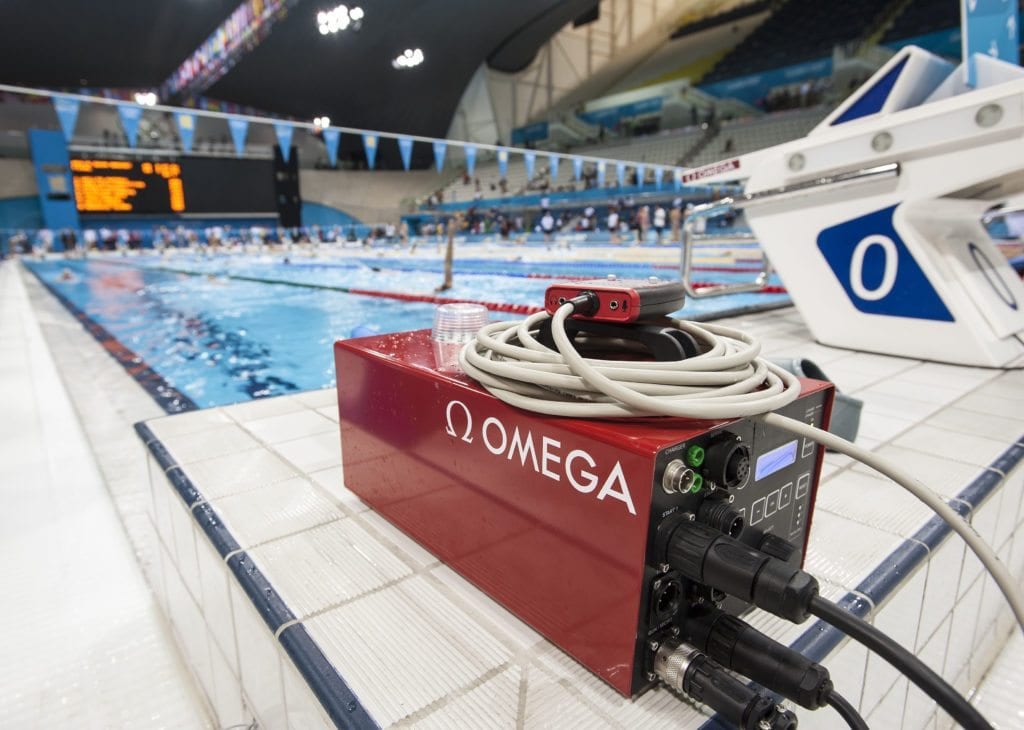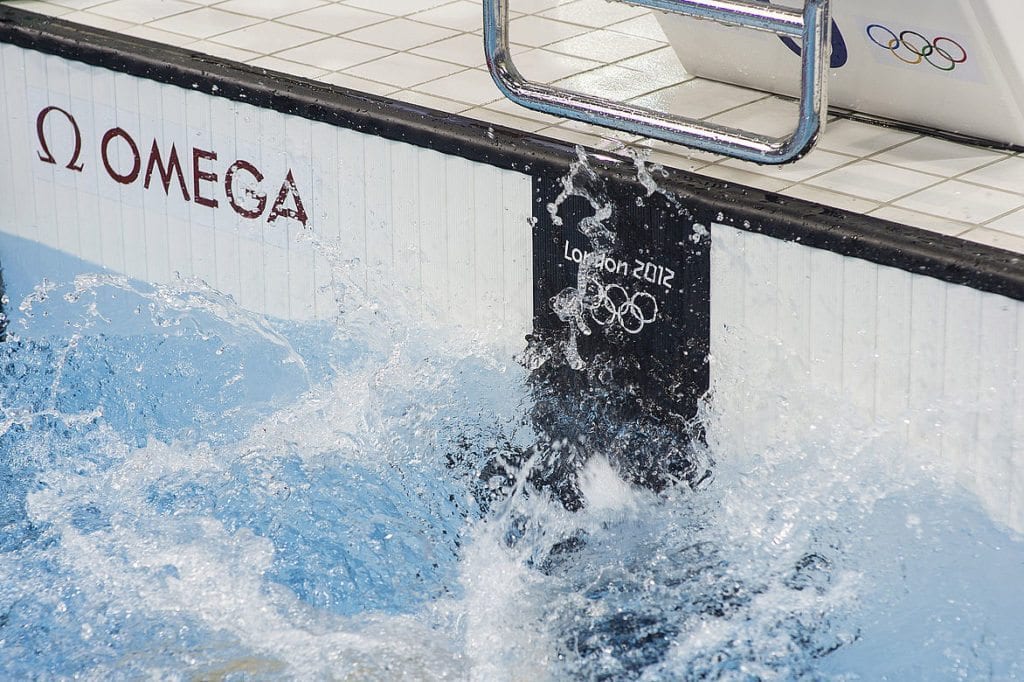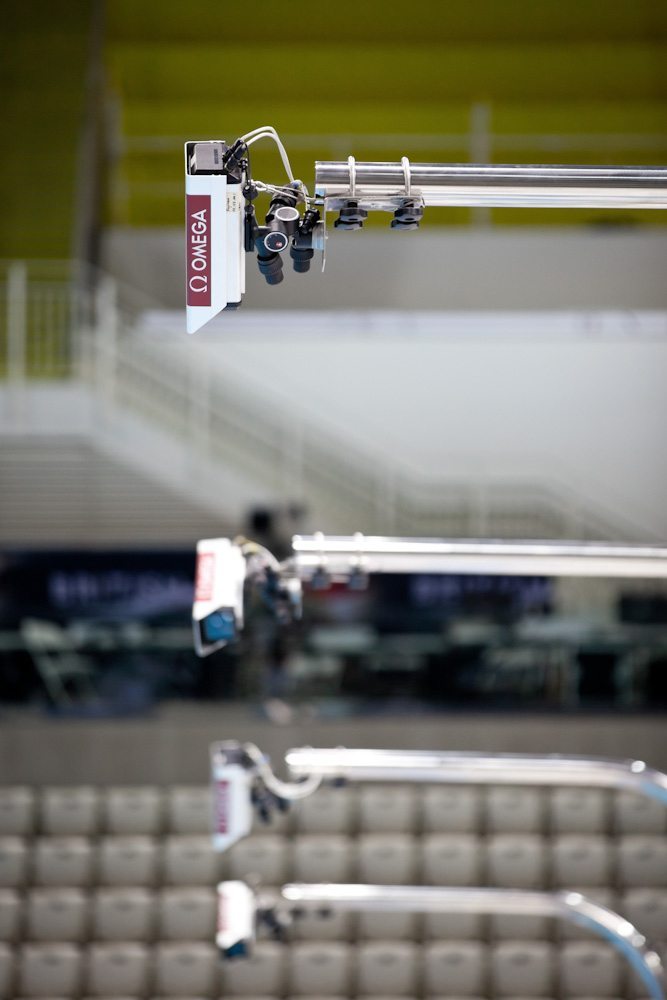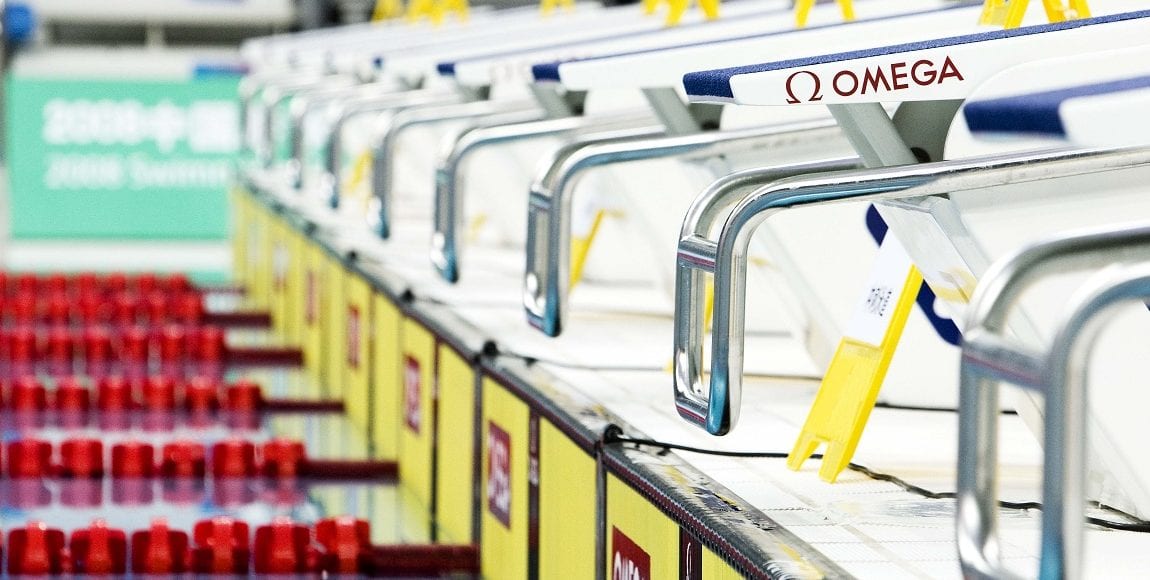Michael Phelps’ victory of .01 seconds in the 2008 Beijing Olympics illustrated the importance of perfect timekeeping in sports. OMEGA, timekeeper of 20+ Olympic games, aptly summarized the shift from human to computer timekeeping: “Competitive swimming has come a long way since three timekeepers with handheld stopwatches crowded each of the eight lanes in major international events.”
The Swim Eight-O-Matic Timer
A semi-automatic swimming timer, first used in the 1956 Olympics.

Touch Pads
The touch pads used at each end of the pool were first used in the 1968 Olympic games. These touch pads helped Michael Phelps claim his 7th Gold Medal in 2008.

Live Timing
In 2000, OMEGA introduced live timing on their website, where users can see the results of Olympic races in real time.

As Olympic athletes continue to push the bar of endurance and athleticism in their sports, so OMEGA will continue to innovate in pursuit of absolute accuracy. Just look at how far they’ve come since their first Olympic timing assignments in 1932.
This article was originally published on July 30, 2012. It has been updated for clarity and new information.
Images ©: Header, 1-3; OMEGA.
Get More Articles Like This in Your Inbox
We're constantly creating great content like this. So, why not get it delivered directly to your inbox? By subscribing you agree to our Privacy Policy but you can unsubscribe at any time.







M Rafiqul Islam | April 16, 2013
|
What is the cost of electronic touch panel with full element for a swimming pool?